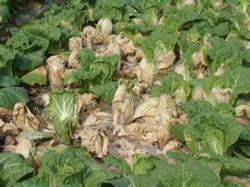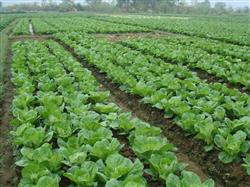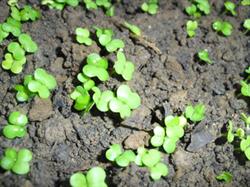Management measures of rosette stage of Chinese Cabbage

First, fertilizer and water management Chinese cabbage rosette stage, the growth rate and growth are very fast, the amount of fertilizer required increased. At the initial stage of the rosette, the "hair" fertilizer should be applied with 8-10 kg of urea per mu. The method is to open a 10 cm ditch on one side of the ridge, fertilize and close the ditch and water it. When opening the ditch, pay attention to hurt the root as little as possible. Second, squatting seedlings to promote root Chinese cabbage squatting seedlings by controlling watering from mid-rosette to heading stage, controlling vigorous growth, thickening leaves, promoting root development, conducive to nutrient accumulation, reducing field humidity, and controlling the occurrence and development of diseases. The squatting time varied from 10 to 20 days, and the leaf color changed from green to yellow or wilted slightly at noon. There are less squatting seedlings in the following situations: varieties with short growth period and fast growth, sowing too late, transplanting large seedlings, poor seedling condition, drought, less rain, higher temperature and lack of water, fertilizer and sand. Third, the main diseases in rosette stage of Chinese cabbage are downy mildew and soft rot. Prevention and control methods: one is to control humidity to prevent downy mildew and soft rot. The second is to find the disease, timely use of drugs to control the development of the disease.
- Prev

How to apply fertilizer to Chinese cabbage
Chinese cabbage can be directly seeded or transplanted, and it is generally cultivated by direct seeding. If transplanting seedlings, fertilization in seedling bed is very important to cultivate strong seedlings. The standard of nursery bed fertilization is to plant a seedbed for one mu of field (about 35 square meters) with fully mature barnyard manure 200ml 250kg or ammonium sulfate 1-1.5.
- Next

Three points for attention in the Management of Chinese Cabbage
Indoor nursery. The whole growth period takes 90 to 100 days, of which the seedling stage is 30 days. The temperature required in the seedling stage is between 15 ℃ and 28 ℃, and geothermal heating facilities are needed to raise seedlings in early February. Seedling utensils can be used in low-barrel or plastic bowls, or nutritional prescriptions can be drawn. Keep the sowing spacing at 8 cm and sow 2 to 3 grains per bowl or hole.
Related
- Where is it suitable to grow horseradish in China? it is expected to see the middle altitude horseradish in Alishan.
- How to prevent tomato virus disease reasonably? (Control methods included)
- Many people like to plant towel gourd on the balcony. What are the main points of this method and management?
- What crops can chili peppers be mixed with?
- Fertilization techniques and matters needing attention in Tomato
- What are the grafting techniques for peach seedlings in spring?
- Harm and control methods of root swelling disease of Chinese cabbage
- What are the pests of sweet potatoes? How to prevent and cure it?
- Symptoms, causes and Control methods of navel Rot in Tomato
- The cause of "Cucumber rotten bibcock" in Farmers' planting Cucumber and its Control Plan

